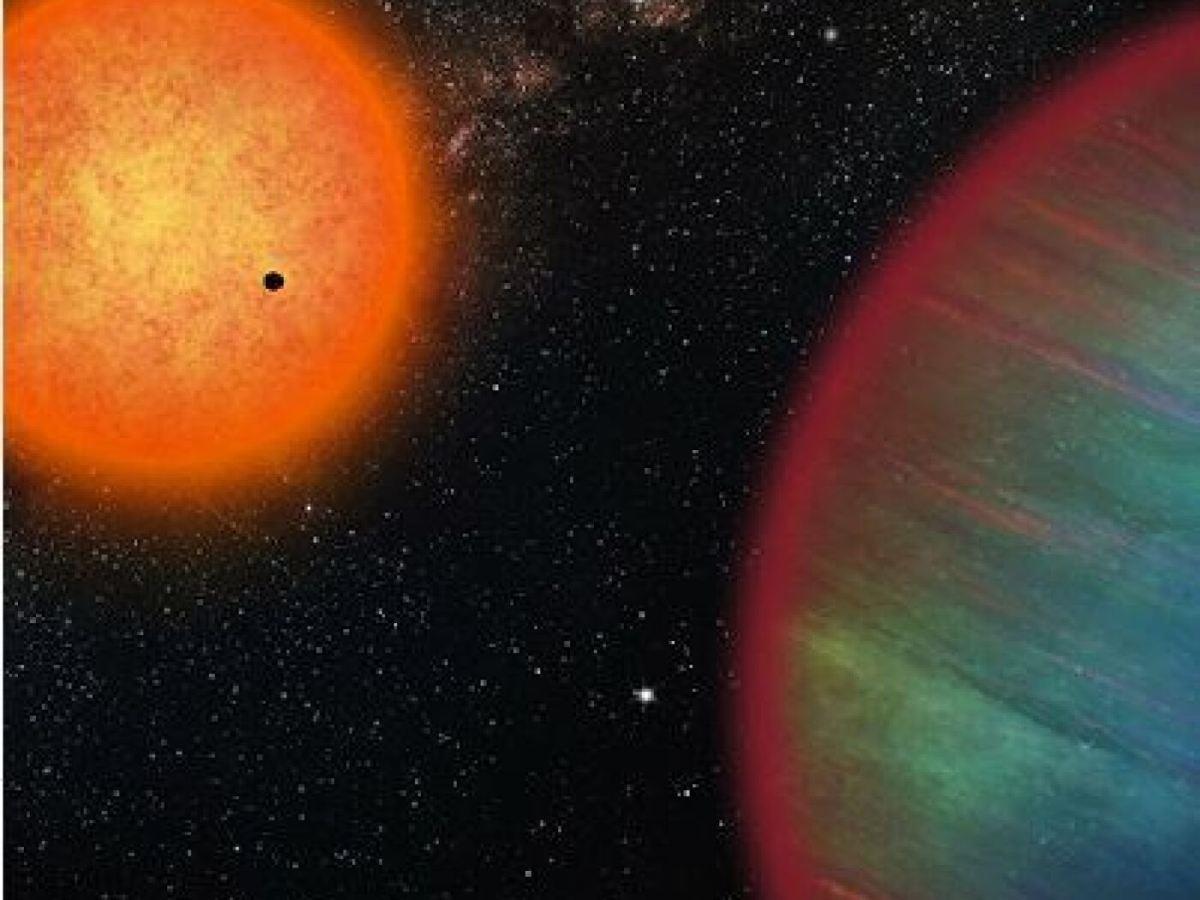
Geneva University Challenges 'Hot Jupiter' Planetary Theories
- Italiano it Università Ginevra: formazione dei sistemi planetari vacilla Original Read more: Università Ginevra: formazione dei sistemi planetari vacill
+Get the most important news from Switzerland in your inbox
A hot Jupiter is a planet with a mass similar to the Jupiter of our solar system but orbiting very close to its star, which raises its temperature to extremely high levels.
The Geneva scientists' work, which began in 2006, started with observations of the planet designated as WASP-132b, which is so close to its sun that it takes only seven days and three hours to make one revolution around it. By way of comparison, our Jupiter takes almost 12 years.
The hot Jovian planets have so far only been observed isolated around their star, with no other planets in their vicinity. This observation seemed very solid as there is a theory that explains it. When, during the process of planetary system formation, giant planets migrate toward their star, those in their inner orbits are either incorporated or ejected, said UNIGE.
More Opinion More The humans of tomorrow will live on MarsThis content was published on Apr 7, 2021 We should accept the challenge of putting humans on Mars because our technology is very close to making it possible, argues Pierre Brisson.
Read more: The humans of tomorrow will live on MarIn the WASP-132 planetary system, which is about 400 light-years from Earth, the theory does not hold. Its final rejection is not yet consummated, but it is very likely, the note says. A short distance from the star, in addition to hot Jupiter, researchers have identified a rocky planet like Earth, but six times its mass-with an orbit even closer to its sun than the Jovian planet (a year on this planet lasts only 24 hours and 17 minutes).
Giant planets like WASP-132b (which“weighs” 41% of Jupiter) cannot form in the vicinity of their star because there is not enough gas and dust“in place” for them to aggregate. They must therefore form far from the star and migrate as the planetary system evolves.
WASP-132 has other planets in addition to the hot Jupiter and super-Earth: a giant one (five times the mass of Jupiter) that takes five years to make one revolution around the star and, much farther away, an even heavier one, probably a so-called brown dwarf (a special type of celestial object, with a mass larger than that of a planet but smaller than that of the Sun).
More Opinion More We will never live on Mars, or anywhere else besides EarthThis content was published on Apr 7, 2021 Following a groundbreaking year for Mars exploration, Sylvia Ekström and Javier Nombela argue that our trips there should and will remain robots' job.
Read more: We will never live on Mars, or anywhere else besides EartIn order to preserve the architecture of this planetary system, particularly the presence of the super-Earth in the vicinity of the star and the giant five times heavier than Jupiter, the migration process of WASP-132b must have occurred differently than predicted by current theory and models. If not, the orbit of the two planets would have been destabilised:“Their presence rather suggests a more stable and dynamically 'soft' migration path in a protoplanetary disk for the hot Jupiter that preserved its (planets') neighbors.”
“The WASP-132 system is an extraordinary laboratory for studying the formation and evolution of multiplanetary systems. The discovery of a hot Jupiter next to a super-Earth (...) and a distant giant challenges our understanding of the formation and evolution of these systems,” said François Bouchy, a professor in the Department of Astronomy at UNIGE's Faculty of Science and co-author of the study.“This is the first time we observe such a (planetary) configuration,” added Solène Ulmer-Moll, a researcher at UNIGE and the University of Bern at the time of the study.
The research, published in the journal Astronomy & Astrophysics, also involved the universities of Bern and Zurich and several foreign universities.
Translated from Italian by DeepL/mga

Legal Disclaimer:
MENAFN provides the information “as is” without warranty of any kind. We do not accept any responsibility or liability for the accuracy, content, images, videos, licenses, completeness, legality, or reliability of the information contained in this article. If you have any complaints or copyright issues related to this article, kindly contact the provider above.






















Comments
No comment